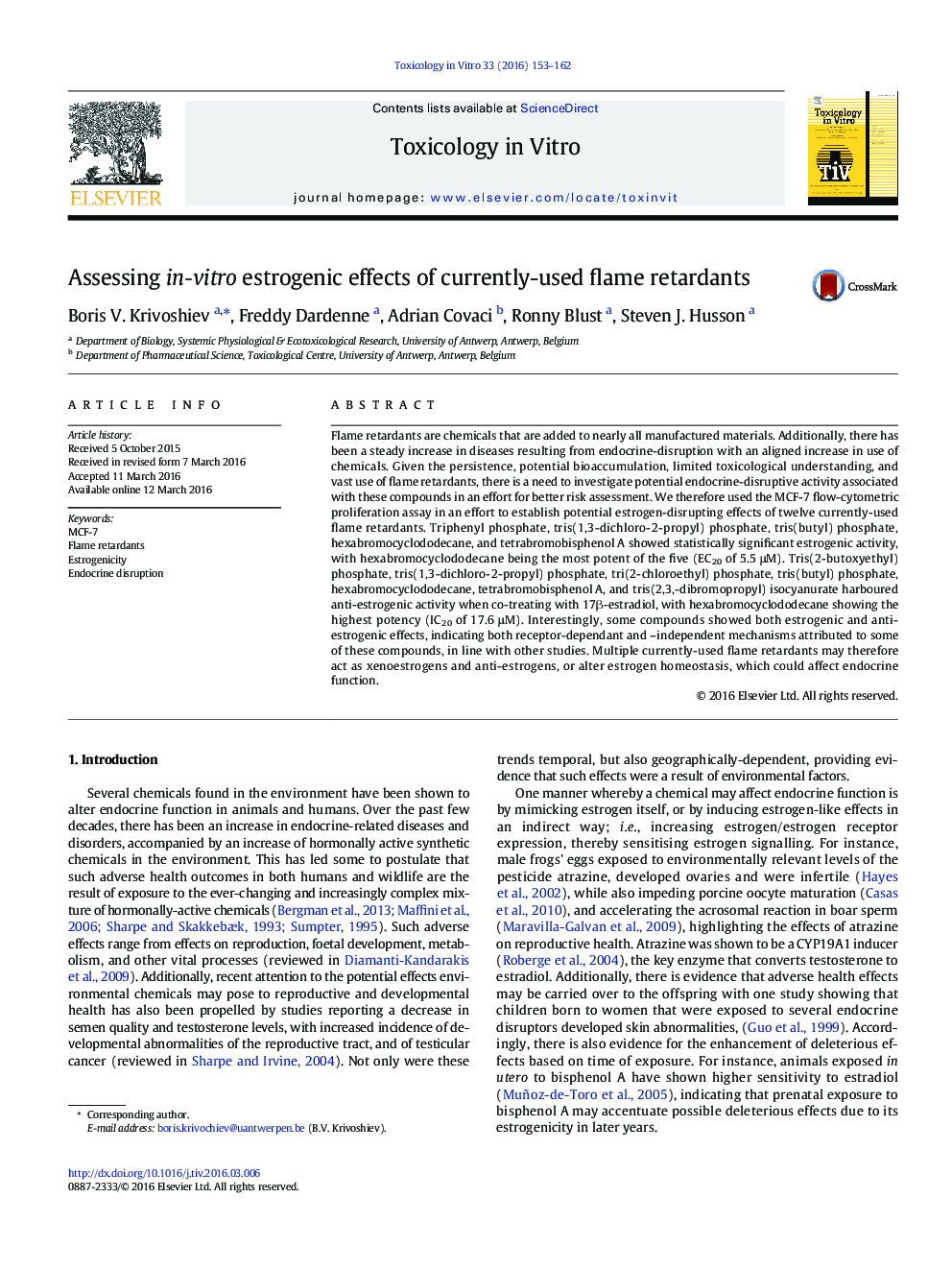| کد مقاله | کد نشریه | سال انتشار | مقاله انگلیسی | نسخه تمام متن |
|---|---|---|---|---|
| 5861006 | 1562712 | 2016 | 10 صفحه PDF | دانلود رایگان |

- Flame retardants are designed to prevent the initiation and spread of fire and increasing in use.
- Increasing incidence of disorders attributed to endocrine disruption correlated to increase use of chemicals.
- Estrogenicity and anti-estrogenicity of current flame retardants measured by MCF-7 flow-cytometric proliferation assay.
- Majority of compounds altered oestrogen function.
- Estrogenicity and anti-estrogenicity likely mediated by receptor-independent and -dependent mechanisms respectively.
Flame retardants are chemicals that are added to nearly all manufactured materials. Additionally, there has been a steady increase in diseases resulting from endocrine-disruption with an aligned increase in use of chemicals. Given the persistence, potential bioaccumulation, limited toxicological understanding, and vast use of flame retardants, there is a need to investigate potential endocrine-disruptive activity associated with these compounds in an effort for better risk assessment. We therefore used the MCF-7 flow-cytometric proliferation assay in an effort to establish potential estrogen-disrupting effects of twelve currently-used flame retardants. Triphenyl phosphate, tris(1,3-dichloro-2-propyl) phosphate, tris(butyl) phosphate, hexabromocyclododecane, and tetrabromobisphenol A showed statistically significant estrogenic activity, with hexabromocyclododecane being the most potent of the five (EC20 of 5.5 μM). Tris(2-butoxyethyl) phosphate, tris(1,3-dichloro-2-propyl) phosphate, tri(2-chloroethyl) phosphate, tris(butyl) phosphate, hexabromocyclododecane, tetrabromobisphenol A, and tris(2,3,-dibromopropyl) isocyanurate harboured anti-estrogenic activity when co-treating with 17β-estradiol, with hexabromocyclododecane showing the highest potency (IC20 of 17.6 μM). Interestingly, some compounds showed both estrogenic and anti-estrogenic effects, indicating both receptor-dependant and -independent mechanisms attributed to some of these compounds, in line with other studies. Multiple currently-used flame retardants may therefore act as xenoestrogens and anti-estrogens, or alter estrogen homeostasis, which could affect endocrine function.
Journal: Toxicology in Vitro - Volume 33, June 2016, Pages 153-162